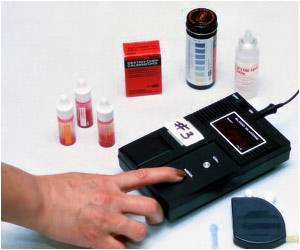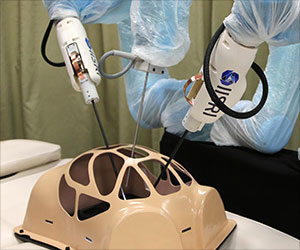Karin pioneers a bionic limb seamlessly linked to nerves, setting a new standard in prosthetic technology and human-machine synergy.
- Karin, a Swedish trailblazer, leads the way with the world's first fully integrated and controllable bionic limb
- Global engineering collaboration tackles traditional prosthetic challenges, yielding a breakthrough in functionality and comfort
- Dr. Max Ortiz Catalan sees Karin's success as a testament to the transformative potential of advanced bionic technology
A highly integrated bionic hand with neural control and feedback for use in daily life
Go to source).
Pioneering Bionic Limb Integration: The "Real Bionic Woman"
The recipient, a 50-year-old Swedish woman named Karin, lost her hand over two decades ago in a farming accident and struggled with conventional prosthetic limbs. Dissatisfied with the discomfort and stress caused by these traditional options, she sought a solution. The specially designed bionic limb, which became operational in 2019 and has been in use for four years, provided relief from her persistent pain.Innovative Development of the Bionic Arm
The development of this bionic arm involved a collaborative effort by a diverse team of engineers from Sweden, Australia, and Italy. Their goal was to tackle issues related to mechanical integration and functional control commonly associated with artificial limbs. Addressing concerns about pain and control, they devised an interface that seamlessly merges human and machine, ensuring both comfort and a reliable electrical connection with the nervous system.Significant Milestones and Future Implications
Dr. Max Ortiz Catalan, the lead researcher of the study and head of neural prosthetics research at the Bionics Institute in Australia, as well as the founder of the Center for Bionics and Pain Research (CBPR) in Sweden, emphasized the significance of Karin's successful long-term use of the bionic limb. According to Dr. Catalan, Karin is the first individual with a below-elbow amputation to benefit from this highly integrated bionic hand, demonstrating its independence and reliability in daily life. This achievement underscores the potential life-changing capabilities of this novel technology for individuals facing limb loss. Remarkably, Karin employs the same neural resources to control the artificial limb as she did for her biological arm, highlighting the seamless integration and adaptability of this miraculous technology.Karin's journey embodies the limitless potential of merging human and machine, heralding a new era in prosthetic excellence.
Reference:
- A highly integrated bionic hand with neural control and feedback for use in daily life - (https://www.science.org/doi/10.1126/scirobotics.adf7360)
Source-Medindia










